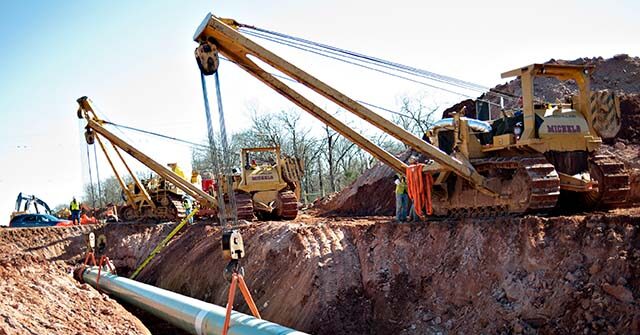President-elect Donald Trump is poised to revitalize the Keystone XL oil pipeline project as one of his first actions upon taking office, according to sources familiar with the matter. This move aligns with Trump’s campaign promise to lower energy costs, an issue he has linked to the inflationary pressures under the Biden administration. The Keystone XL project has been a contentious political topic for years, having faced multiple approvals and rejections that reflect the changing priorities of different administrations. The project was originally rejected by President Barack Obama in 2015, then greenlit by Trump in 2017, but its future was dashed again when President Joe Biden revoked the permit in 2021, leading to the project’s developer abandoning its efforts.
During a debate with Vice President Kamala Harris, Trump criticized Biden, questioning why the administration halted the Keystone pipeline while simultaneously approving the Nord Stream 2 project that would transport Russian gas to Europe. Trump’s critique emphasizes perceived inconsistencies in Biden’s energy policy, portraying it as a failure to support American interests while favoring foreign energy deals. This stance resonates with Trump’s broader pro-oil and energy independence narrative, which he intends to revive, suggesting that he can reinstate the Keystone XL project as a significant aspect of his administration’s energy agenda.
Reviving the Keystone XL would present significant logistical and legal challenges. Any entity pursuing the pipeline’s construction would need to reacquire land rights, especially in Nebraska, where landowners have previously expressed strong opposition to such endeavors, fearing the implications of eminent domain. Jane Kleeb, chair of the Nebraska Democratic Party and a prominent anti-Keystone activist, warns that the resurgence of the project would rekindle tensions among conservative landowners who are wary of private companies intruding on their property rights. The situation places Trump at a crossroads, balancing political promises with the reality of community sentiments and legal hurdles associated with land acquisitions and environmental concerns.
Additionally, the project’s original developer, Calgary-based TC Energy, no longer possesses ownership of the Keystone XL infrastructure. In anticipation of gaining the necessary cross-border permit, TC Energy had already installed portions of the pipeline in both Canada and the U.S., but they have since been removed. Should any organization move forward with the reconstruction of the pipeline, they would face the daunting task of obtaining fresh local permits and approvals, a process that could be further complicated by renewed public scrutiny and pushback from environmental groups. This scenario exemplifies the complexities surrounding the realization of large-scale infrastructure projects in a politically charged environment.
Public sentiment surrounding the Keystone XL project indicates that a substantial portion of the American populace is in favor of its revival; a 2022 poll showed that 71% of Americans supported the initiative. This statistic is encouraging for Trump, as he attempts to rally support for his pro-oil initiatives. The potential relaunch of the Keystone XL pipeline is not only emblematic of Trump’s energy policy but also signifies a broader strategy to align with conservative and pro-business sentiments among American voters. Commentators, including those affiliated with Breitbart News, have highlighted the importance of such projects in creating jobs and lowering energy costs, framing them as crucial to overhauling national energy strategies in response to the Biden administration’s climate-focused policies.
In summary, Trump’s proposed revival of the Keystone XL oil pipeline project embodies both a fulfillment of his campaign promises and a direct challenge to Biden’s energy policies. As the political arena gears up for another contentious period, the discussion surrounding Keystone encapsulates larger themes of energy independence, environmental stewardship, and government regulation. The tensions between promoting fossil fuel infrastructure and addressing climate change remain ever-present, with each administration reshaping the narrative around energy production and consumption. Whether Trump’s ambitions for the Keystone XL can overcome the legal and logistical challenges ahead remains to be seen, but it is certain that this project will remain a hot-button issue in U.S. politics going forward.

